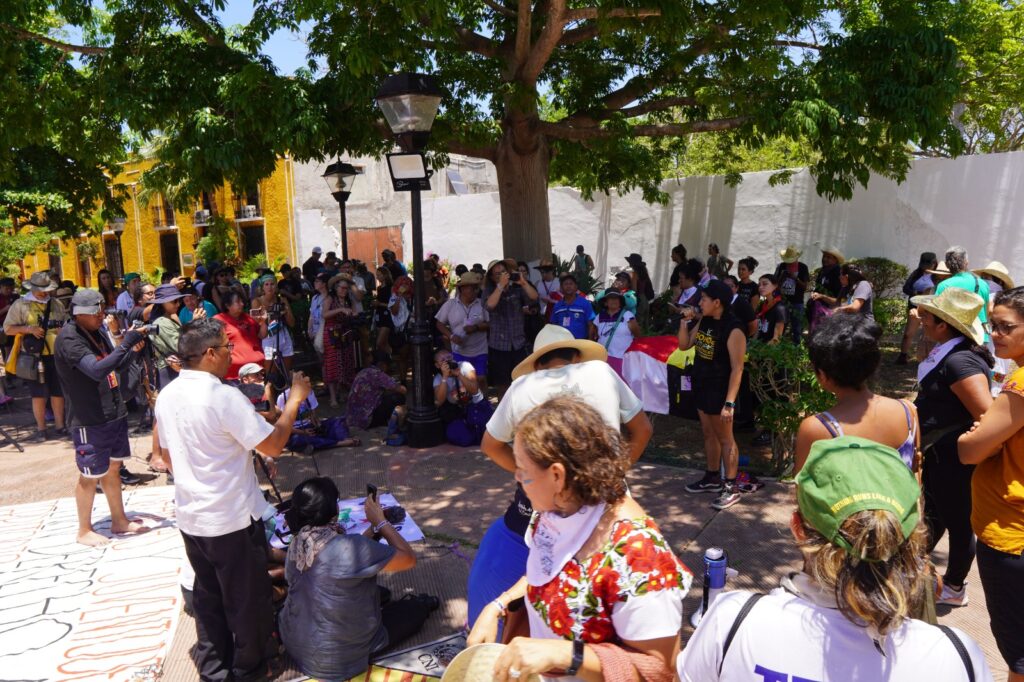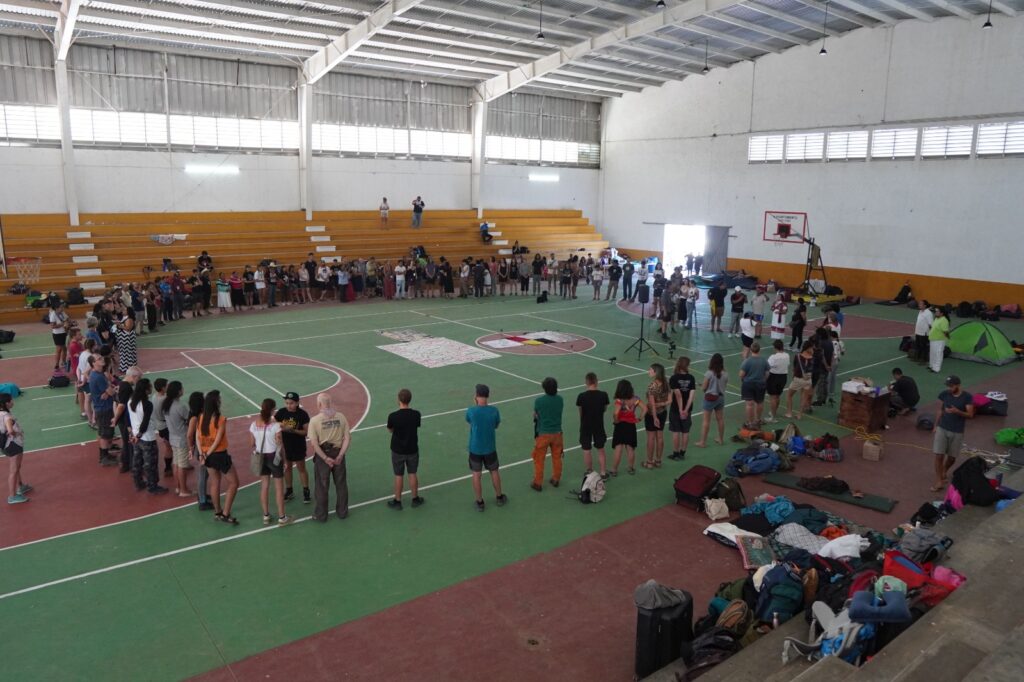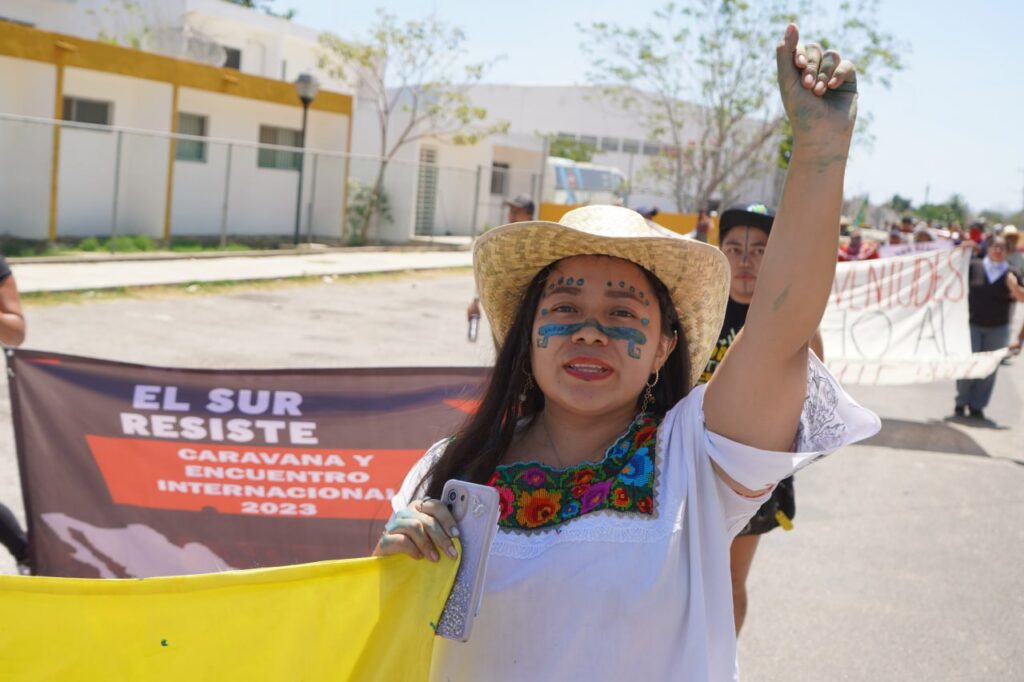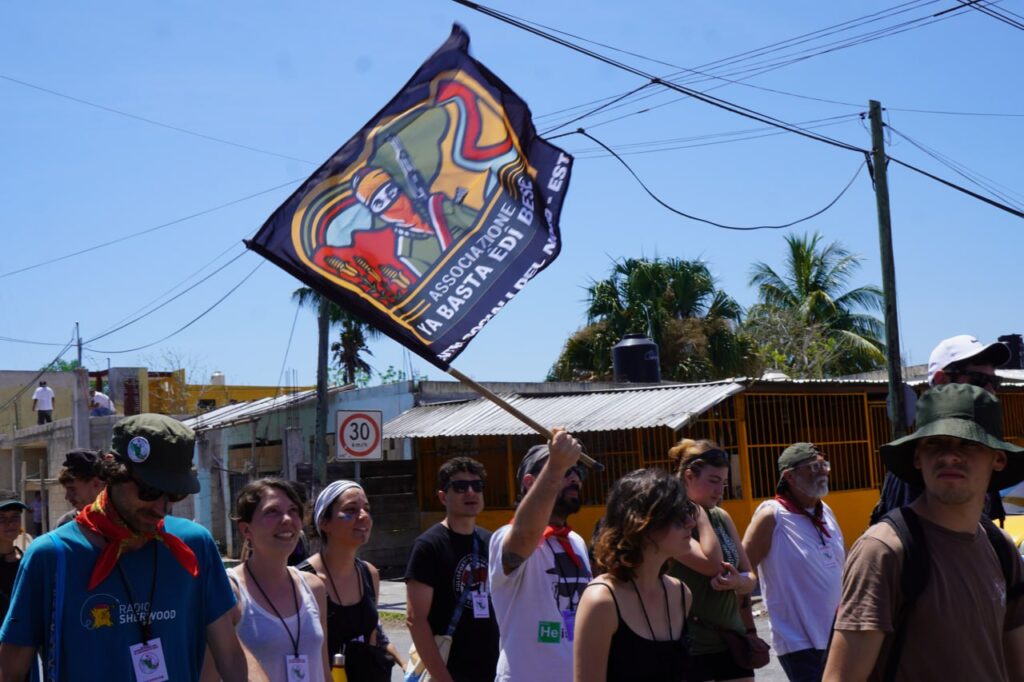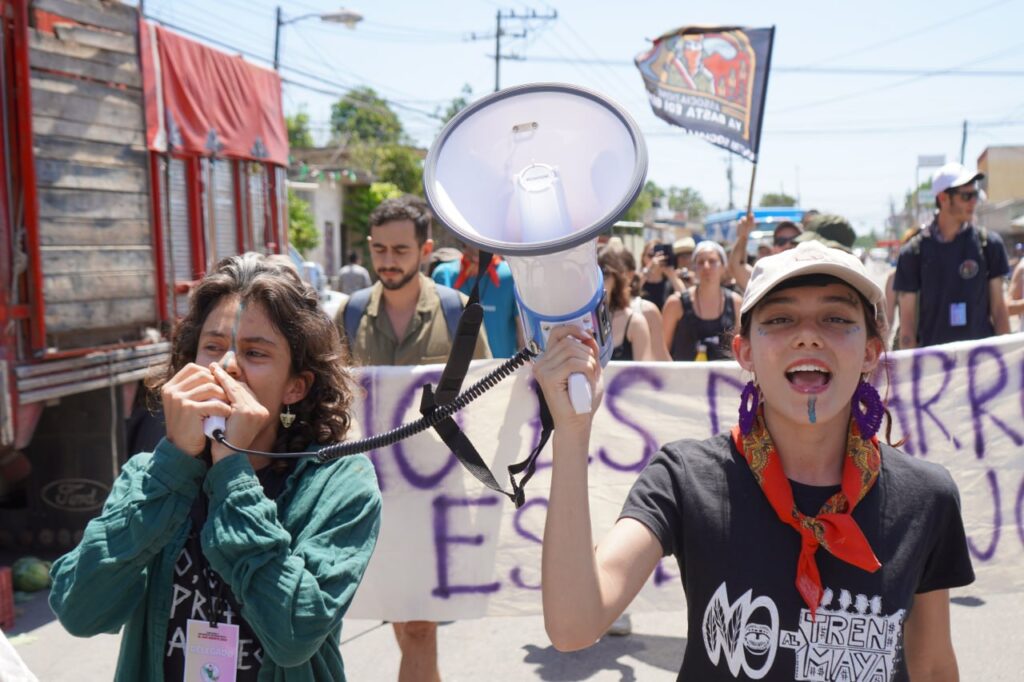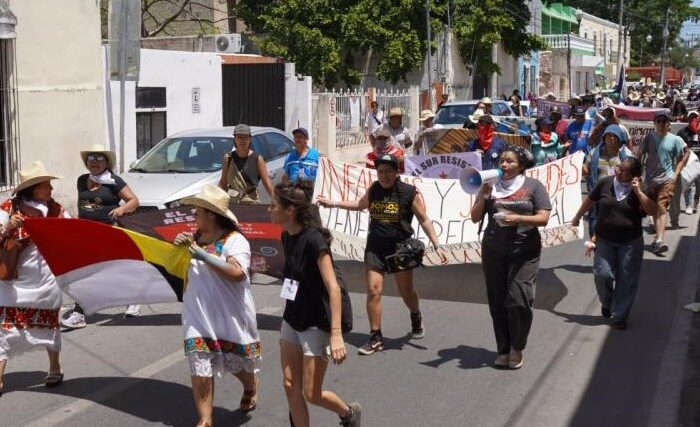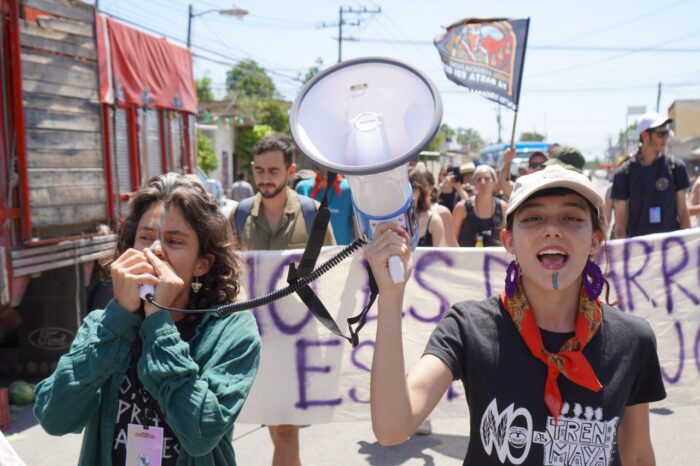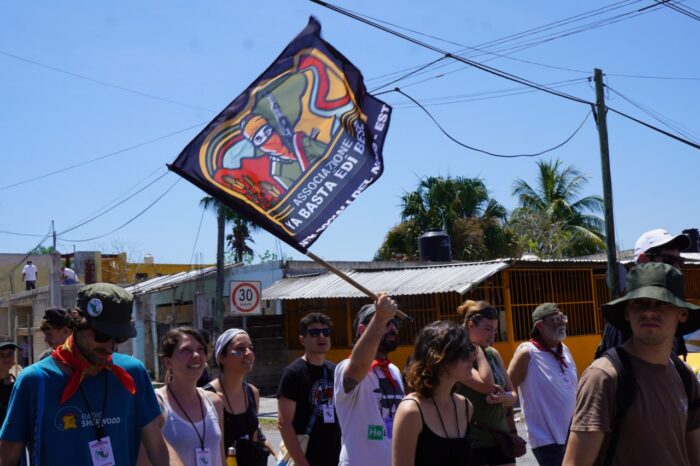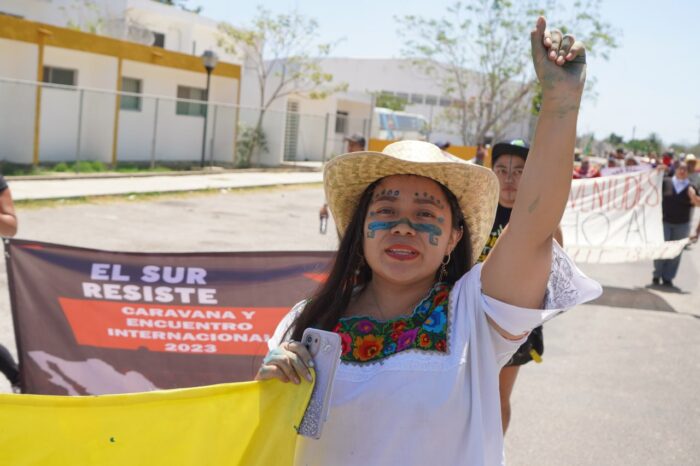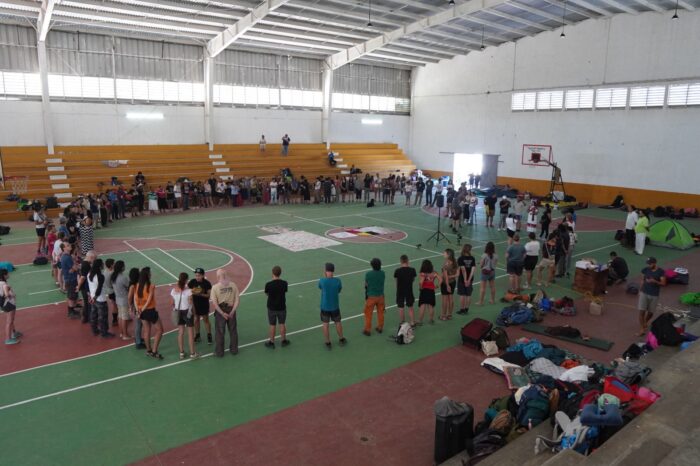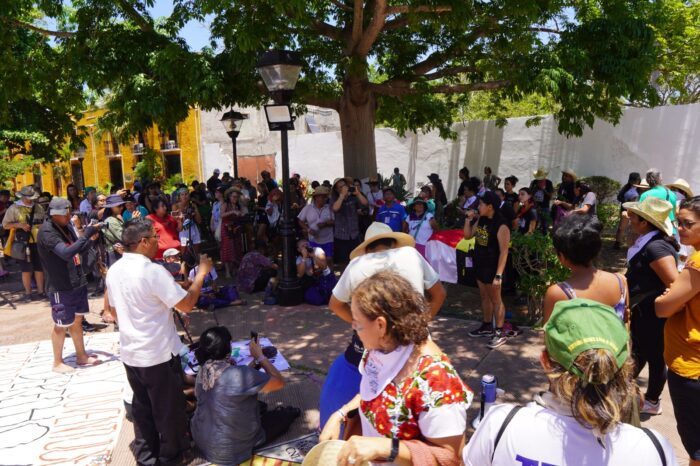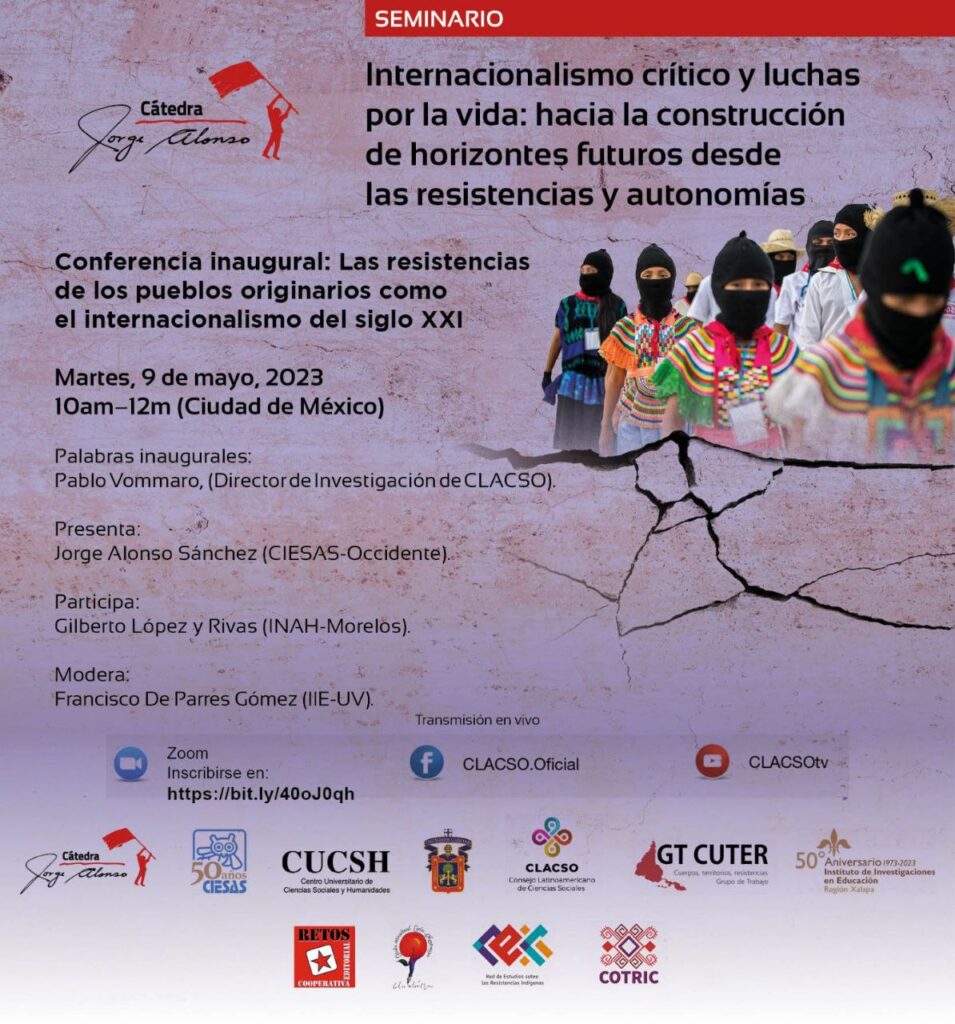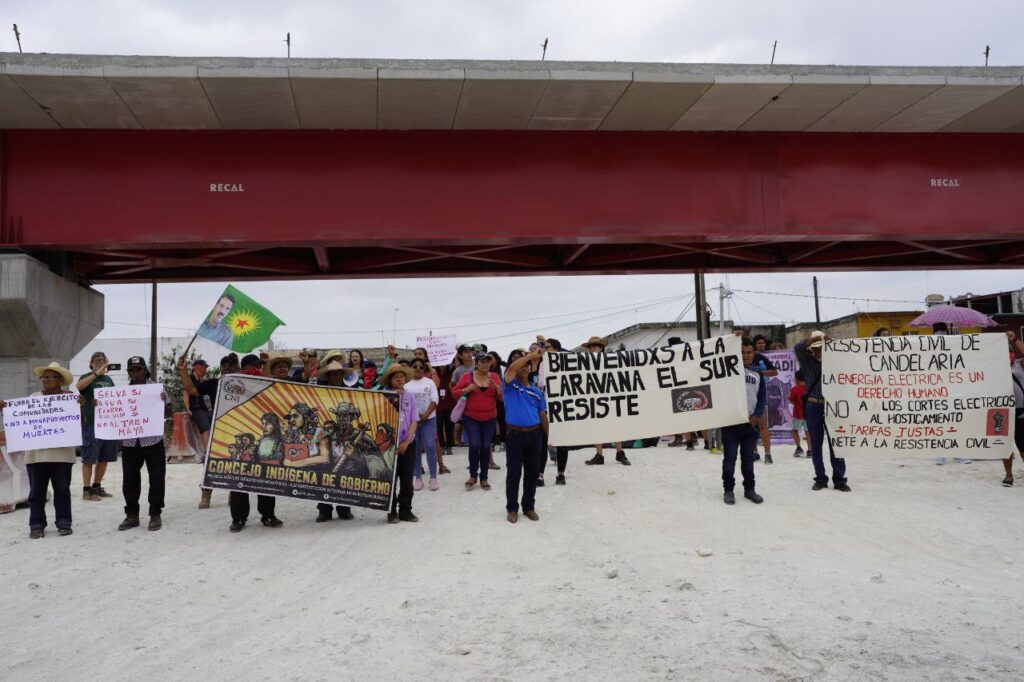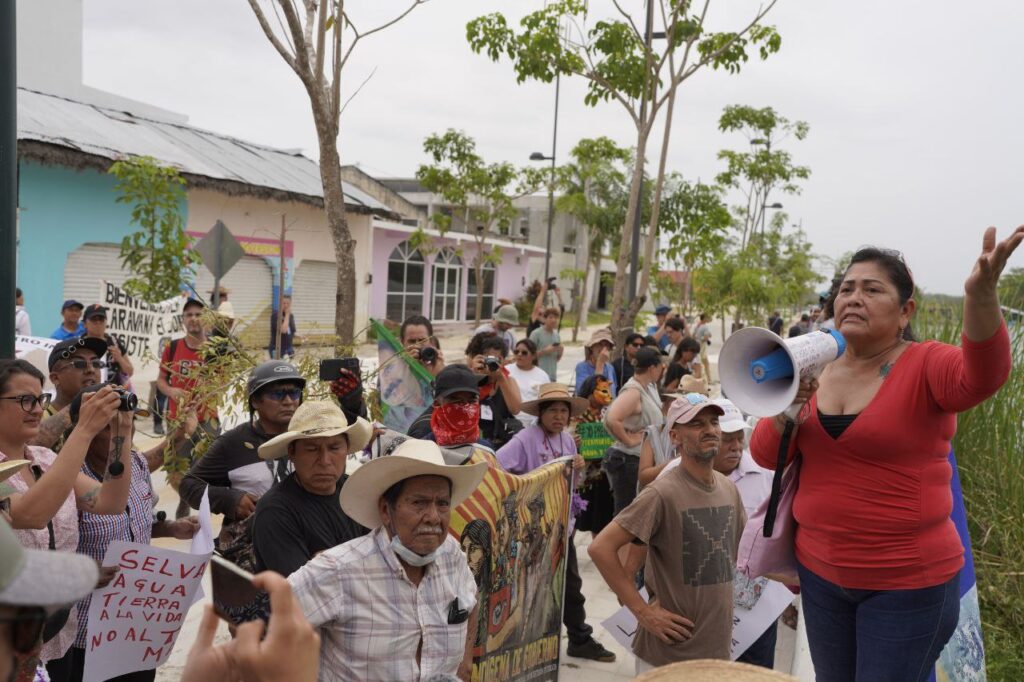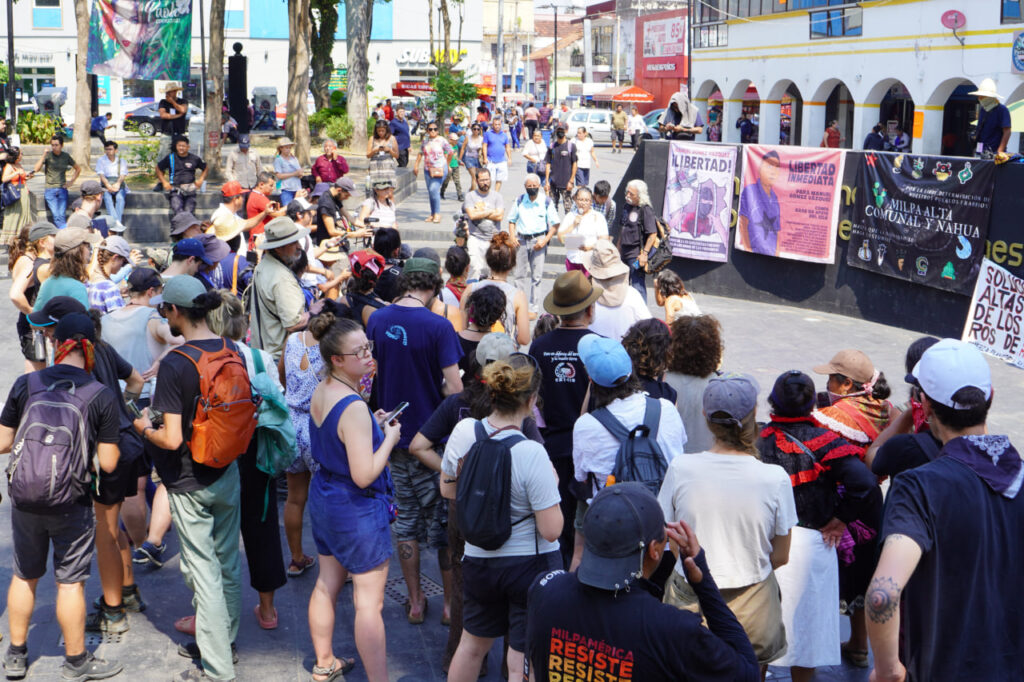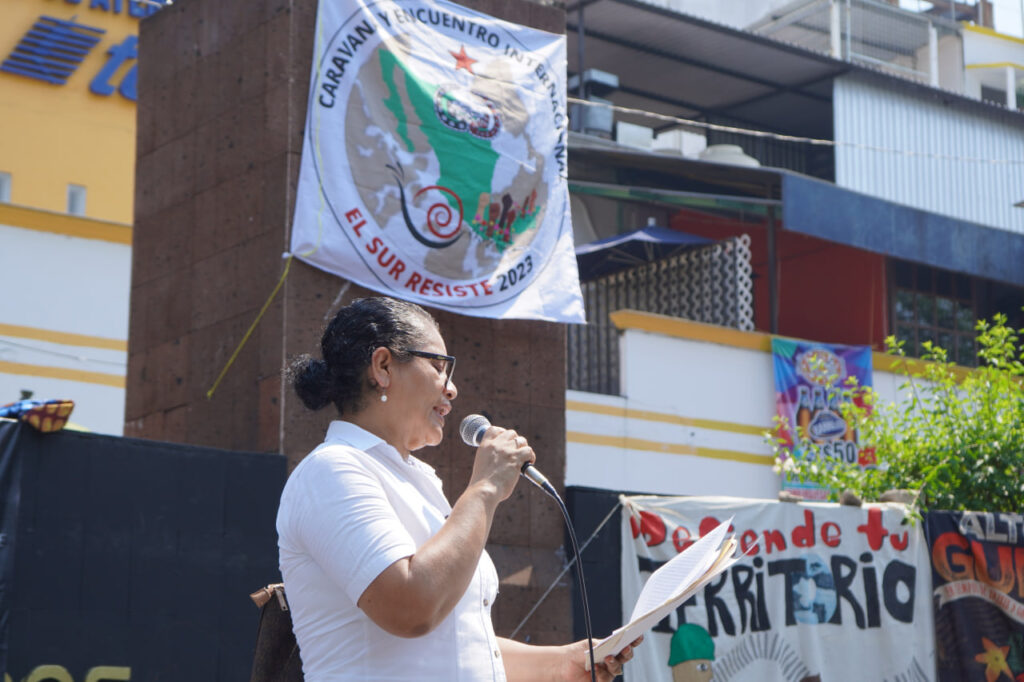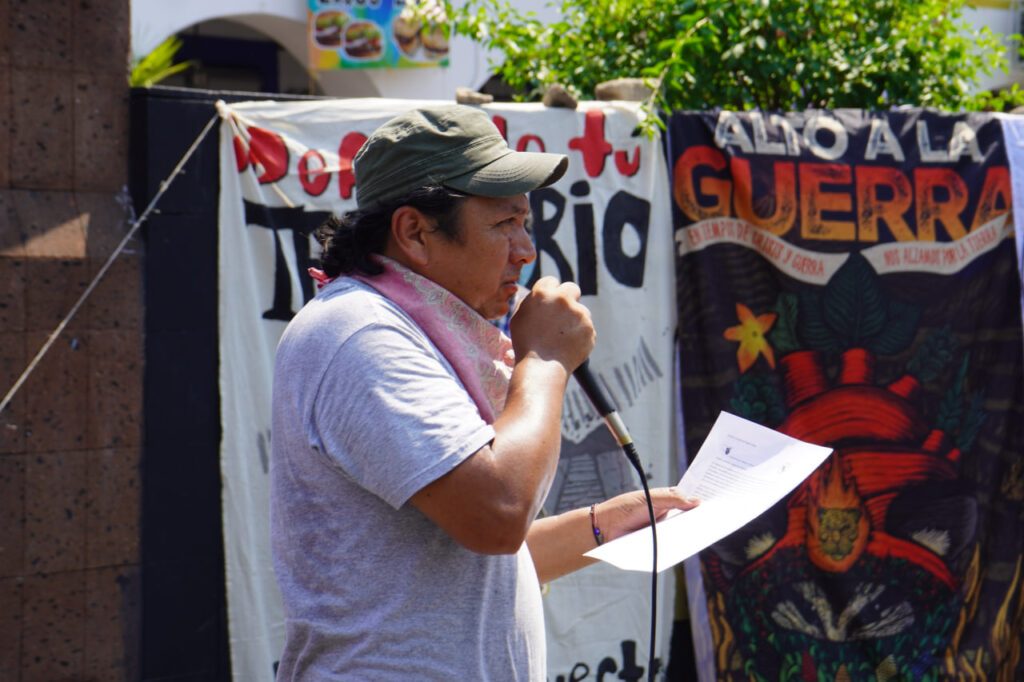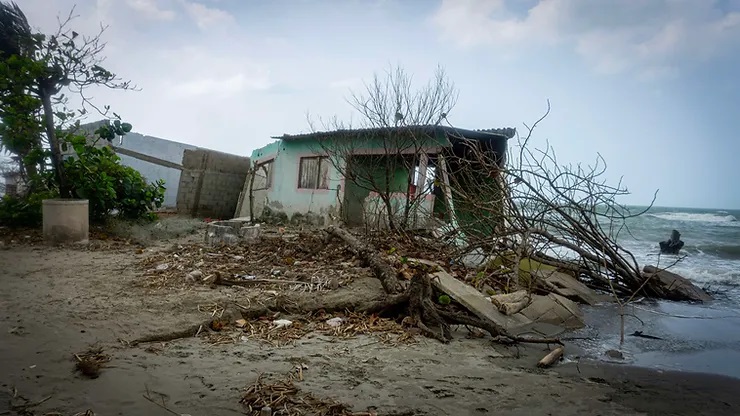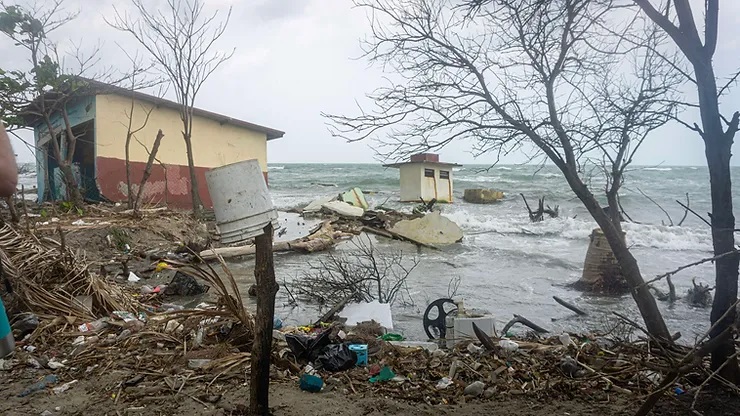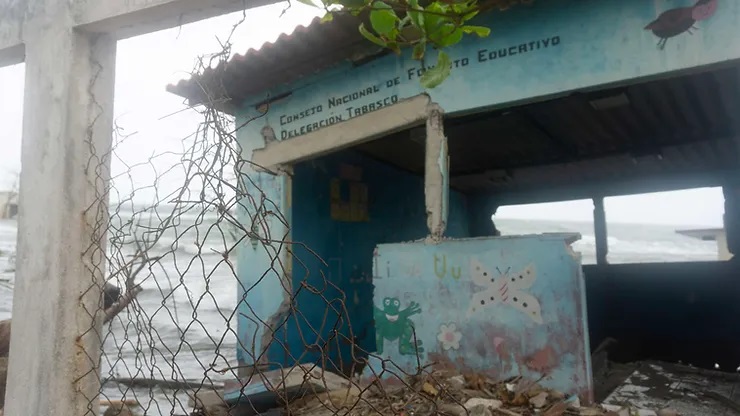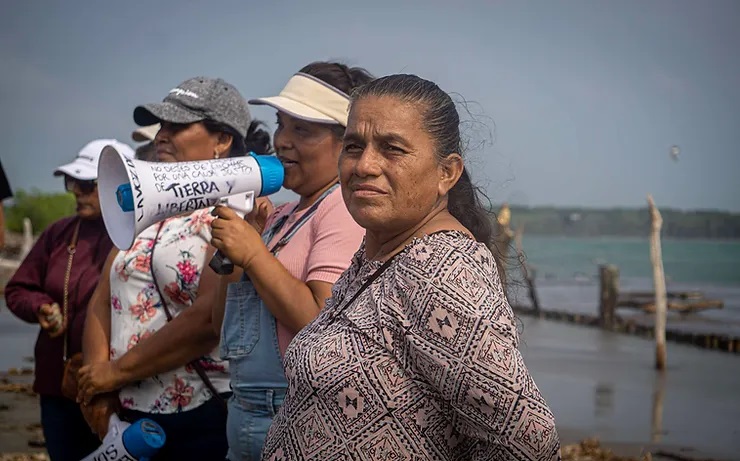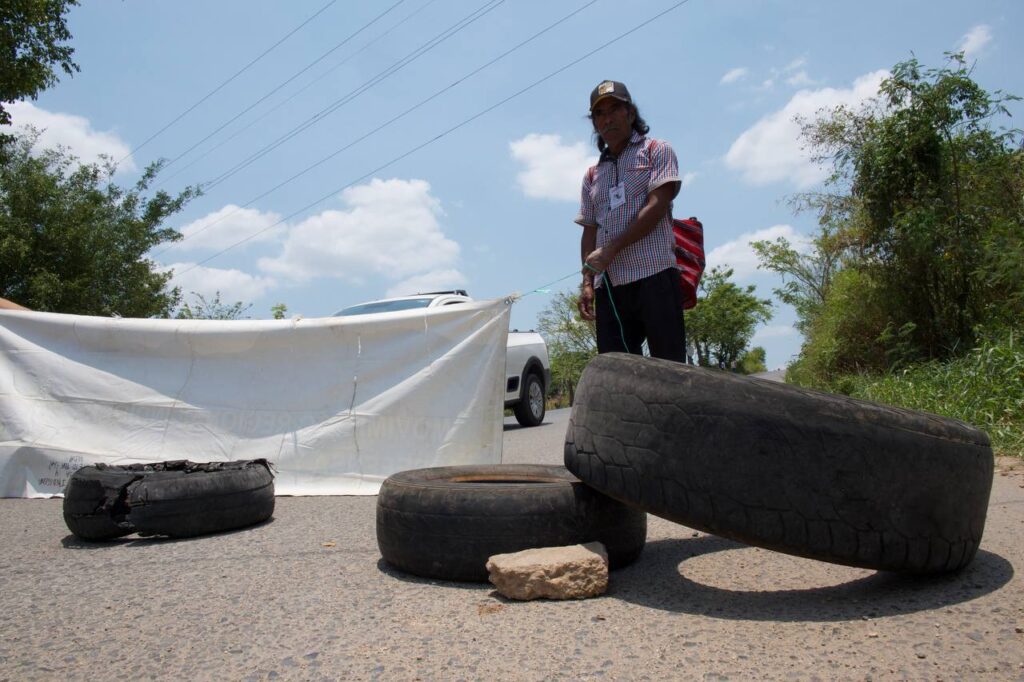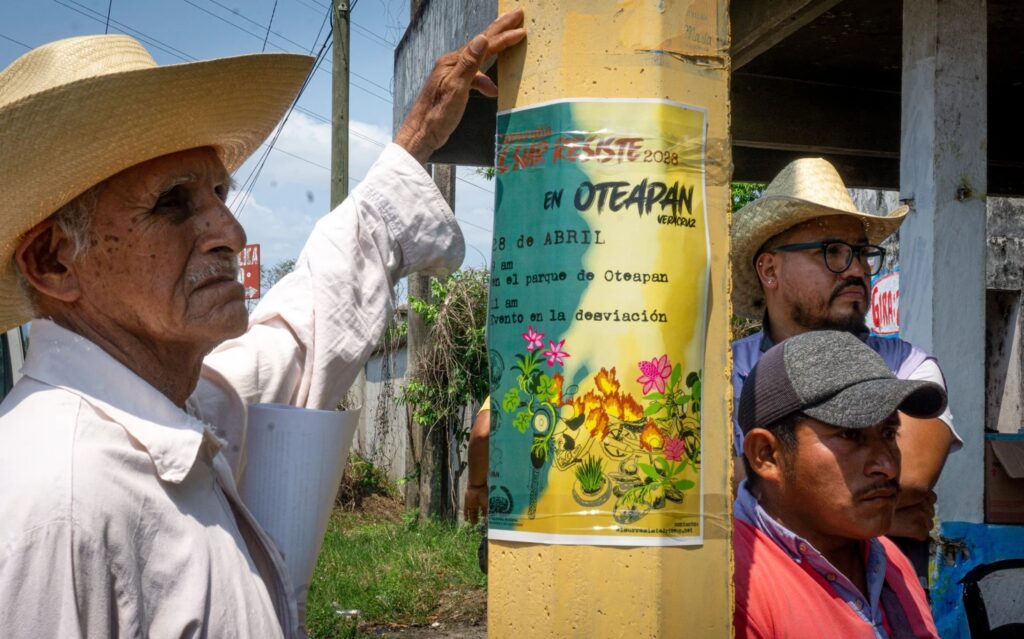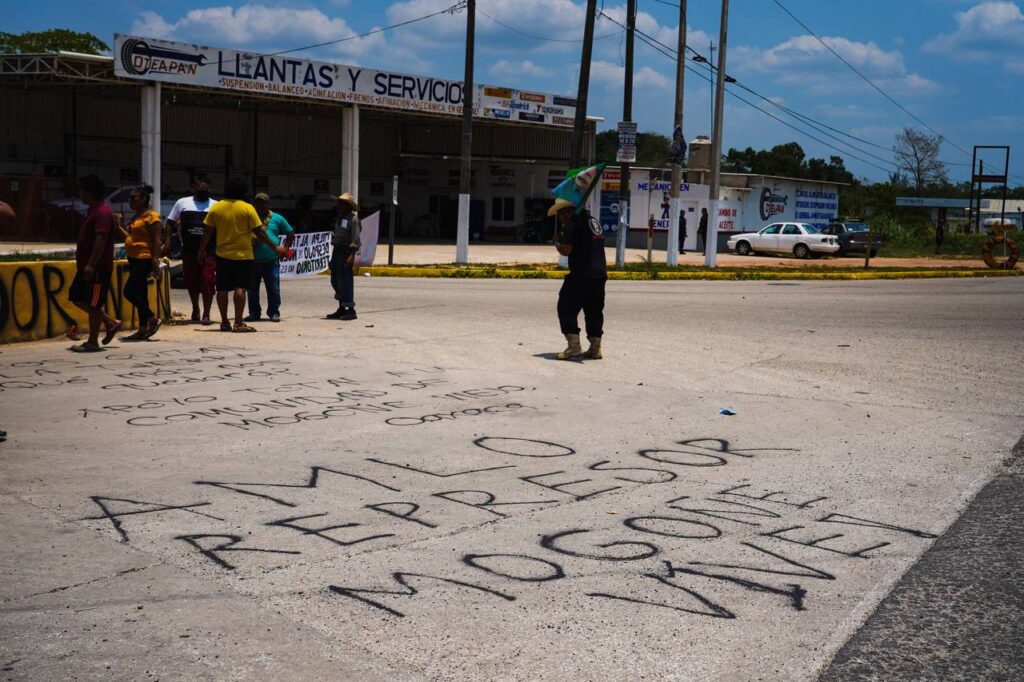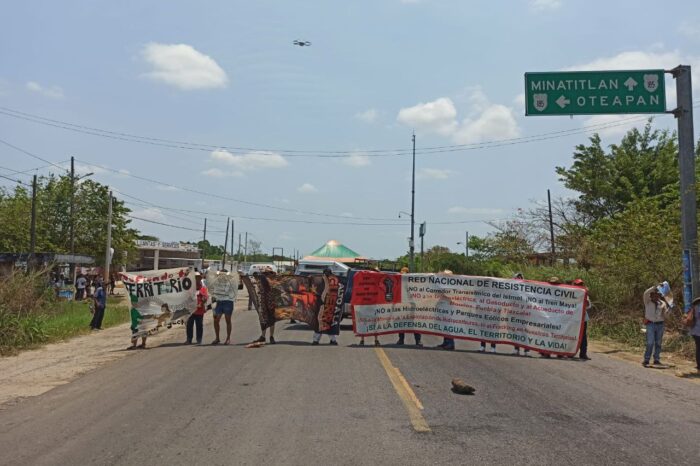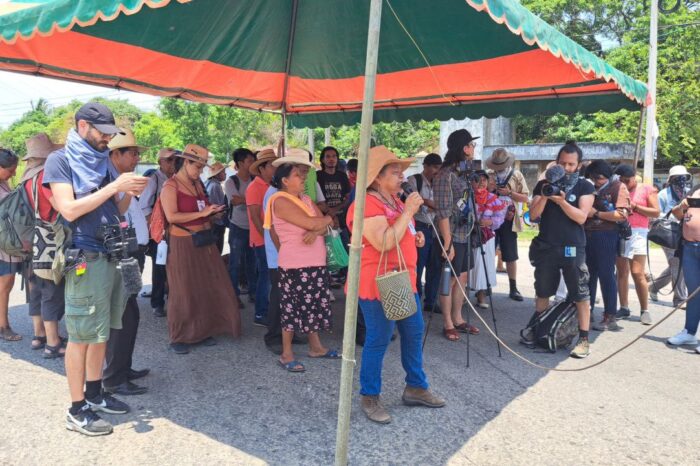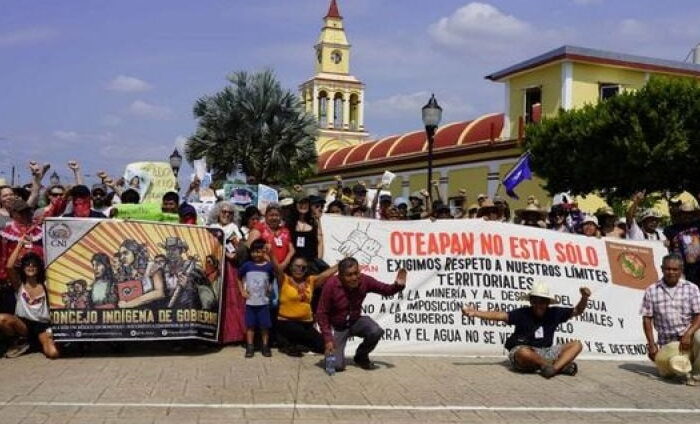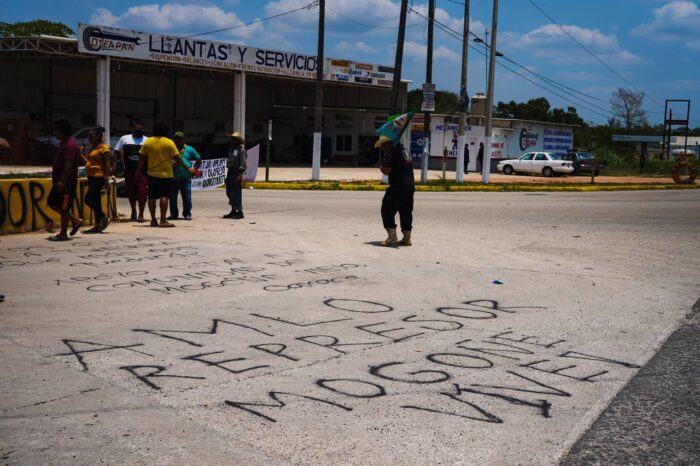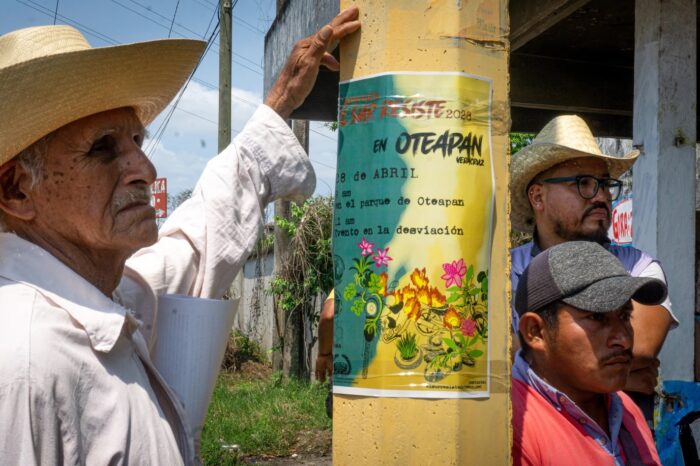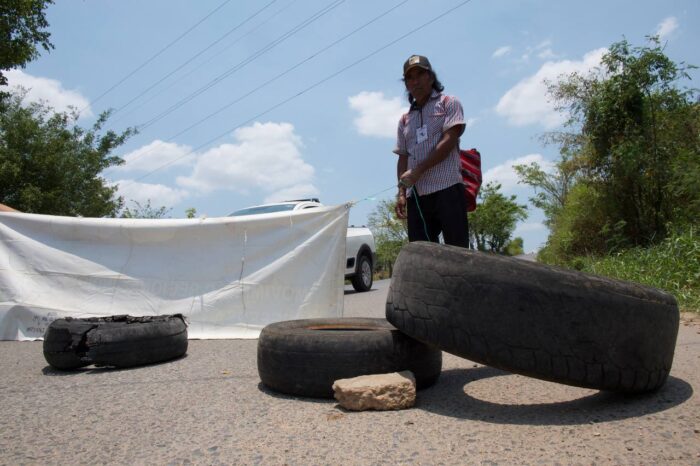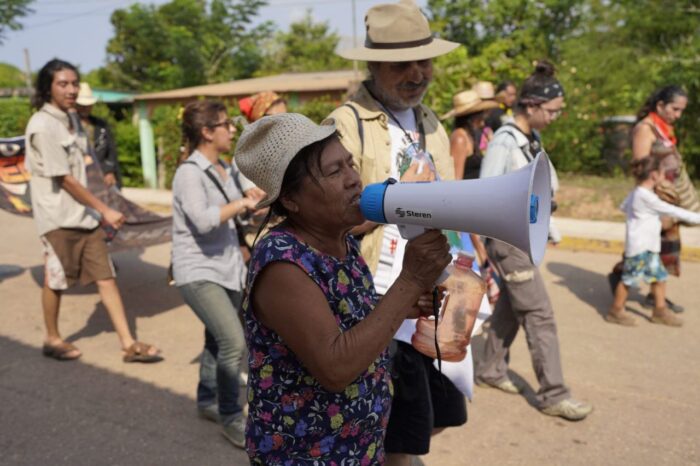
Mexico
(Español) Abejas de Acteal denuncian continuación de contrainsurgencia en comunidades de Chiapas
Fuente: Avispa Midia
En portada: Habitantes de la comunidad Quextic Centro, junto a integrantes del Consejo Pacifista, destruyeron un potrero de Las Abejas de Acteal
La organización Sociedad Civil Las Abejas de Acteal denunció que el pasado jueves (27), habitantes de la comunidad Quextic Centro, perteneciente al municipio de Chenalhó, junto a integrantes del grupo “Consejo Pacifista Sembradores de Paz” (Consejo Pacifista), destruyeron un potrero de su organización, en el contexto de la construcción de una carretera que pasa por terrenos de la organización tzotzil.
“La gente de la citada comunidad, llegaron con machetes, barretas de fierro, martillos y una motosierra para destruir nuestro alambrado y posteriormente se robaron todo los postes y los alambres de púas en una camioneta nissan doble cabina, color blanca”, detalla un comunicado emitido después de la agresión.
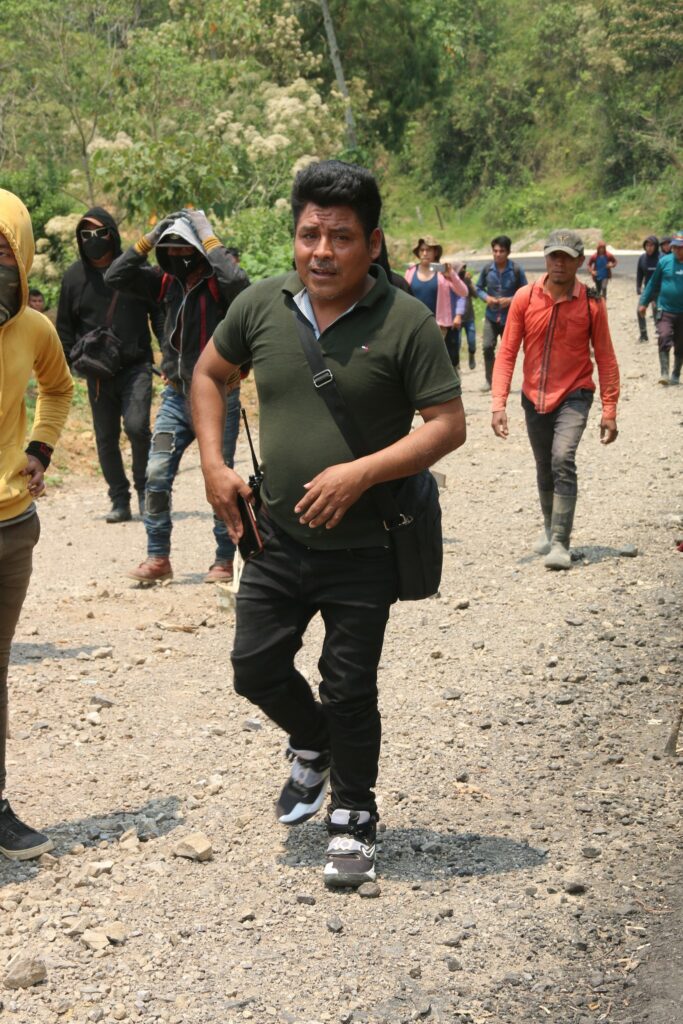



Las Abejas de Acteal alertan que el más reciente hostigamiento forma parte de un conflicto social y político mayor. “Confirmamos que este gobierno que se pregona así mismo de ‘4ª Transformación’, está dando continuidad a las políticas de contrainsurgencia, de desgaste y de divisionismo en nuestras comunidades”, sostuvo la organización de los Altos de Chiapas.
En comunicado, reiteraron el llamado a las autoridades federales, a quienes se dirigieron en marzo de este año, para que interceda a través de las dependencias de derechos humanos, “ya que la carretera de la comunidad Quextic Centro es parte de los acuerdos de ‘solución amistosa’ que suscribió un pequeño grupo de sobrevivientes de la Masacre de Acteal el llamado ‘Consejo Pacifista’, en el año de 2020”. Señalan que también se dirigieron a la Comisión Interamericana de Derechos Humanos (CIDH), ya que la “solución amistosa” del gobierno federal, “está causando problemas, violencias en las comunidades de Chenalhó y sobre todo en donde existe presencia de Las Abejas de Acteal”.
Te puede interesar – En Acteal exigen juicio para autores intelectuales y materiales de la matanza
La organización contextualiza que, en el año de 2019, las autoridades comunitarias de Quextic Centro solicitaron derecho de vía para construir una carretera que atravesaría parte de un predio de Las Abejas de Acteal, a lo cual brindaron su permiso. No obstante, señalan que para 2021, cuando comenzaron los trabajos, las autoridades comunitarias tomaron más espacio de lo acordado, “violando así las actas de acuerdo en las cuales hemos dado nuestro consentimiento”.
Ante esta situación, integrantes de Las Abejas han realizado tareas para reforzar el alambrado del predio y el potrero de su organización. Un día antes de la agresión, señalan haber notificado a las autoridades de Chenalhó sobre la realización de trabajos en dicho lugar “para evitar agresiones hacia nuestra integridad física y psicológica”. Pese a ello, aconteció la destrucción del espacio y el robo a la propiedad colectiva de la organización tzotzil, sin intervención de ninguna autoridad.
“Invitamos en dos ocasiones a las autoridades de Quextic Centro y su patronato de camino a una plática para resolver dicho problema, pero hicieron caso omiso a nuestra invitación”, detallan Las Abejas de Acteal. También señalan que, dentro del predio propiedad de la organización, existe un manantial de agua, por lo que las autoridades de Quextic Centro “construyeron una captación para llevar este vital líquido a su comunidad sin pedirnos permiso, consideramos esto como abuso de confianza ya que, en el acta de acuerdo de derecho de vía del camino, jamás se habla del manantial de agua”, denuncian.
Antecedentes
A la más reciente agresión se suma que, a principios de este año, el grupo “Consejo Pacifista” construyó su oficina junto a la entrada de la sede de la Organización Sociedad Civil Las Abejas de Acteal. “Su objetivo es el de confundir a la sociedad y reafirmar su usurpación hacia nuestra lucha y organización. Y tenemos conocimiento que sus líderes o como se hagan llamar, son los que aconsejan al agente rural y patronato de camino de la comunidad Quextic Centro, violar los acuerdos plasmados en las actas de acuerdo sobre el derecho de vía de la carretera”, sostiene la organización tzotzil.
Te puede interesar – Abejas de Acteal: A 25 años de la masacre continúa violencia contra tzotziles
Las Abejas denuncian que estas acciones son posibles debido a la impunidad en el caso de la Masacre de Acteal sucedida en 1997. “La contrainsurgencia y agresiones hacia los pueblos organizados y apartidistas, la grave crisis de derechos humanos y un Estado que se ha convertido en un Narco-Estado, toda esta podredumbre es el tipo de gobiernos en México que va desde los tres niveles de responsabilidad y, es lo que ha venido a rematar las heridas del tejido social y comunitario de las comunidades de Chenalhó, y como es evidente, en nuestra organización Las Abejas de Acteal”, refieren en comunicado.
Por último, la organización Sociedad Civil Las Abejas de Acteal, con más de 30 años de lucha, señala que “entienda el mal gobierno que no caeremos en sus provocaciones a través de nuestros propios hermanos que tristemente su corazón y pensamiento han sido cegados y envenenados por el dinero y poder”. Ante ello, exigieron respeto a su propiedad colectiva “de lo contrario, recurriremos a otras acciones, hasta que se respeten los acuerdos firmados entre nuestra Organización Las Abejas de Acteal y la comunidad Quextic Centro”.
(Español) Abejas de Acteal denuncian continuación de contrainsurgencia en comunidades de Chiapas
Fuente: Avispa Midia
En portada: Habitantes de la comunidad Quextic Centro, junto a integrantes del Consejo Pacifista, destruyeron un potrero de Las Abejas de Acteal
La organización Sociedad Civil Las Abejas de Acteal denunció que el pasado jueves (27), habitantes de la comunidad Quextic Centro, perteneciente al municipio de Chenalhó, junto a integrantes del grupo “Consejo Pacifista Sembradores de Paz” (Consejo Pacifista), destruyeron un potrero de su organización, en el contexto de la construcción de una carretera que pasa por terrenos de la organización tzotzil.
“La gente de la citada comunidad, llegaron con machetes, barretas de fierro, martillos y una motosierra para destruir nuestro alambrado y posteriormente se robaron todo los postes y los alambres de púas en una camioneta nissan doble cabina, color blanca”, detalla un comunicado emitido después de la agresión.




Las Abejas de Acteal alertan que el más reciente hostigamiento forma parte de un conflicto social y político mayor. “Confirmamos que este gobierno que se pregona así mismo de ‘4ª Transformación’, está dando continuidad a las políticas de contrainsurgencia, de desgaste y de divisionismo en nuestras comunidades”, sostuvo la organización de los Altos de Chiapas.
En comunicado, reiteraron el llamado a las autoridades federales, a quienes se dirigieron en marzo de este año, para que interceda a través de las dependencias de derechos humanos, “ya que la carretera de la comunidad Quextic Centro es parte de los acuerdos de ‘solución amistosa’ que suscribió un pequeño grupo de sobrevivientes de la Masacre de Acteal el llamado ‘Consejo Pacifista’, en el año de 2020”. Señalan que también se dirigieron a la Comisión Interamericana de Derechos Humanos (CIDH), ya que la “solución amistosa” del gobierno federal, “está causando problemas, violencias en las comunidades de Chenalhó y sobre todo en donde existe presencia de Las Abejas de Acteal”.
Te puede interesar – En Acteal exigen juicio para autores intelectuales y materiales de la matanza
La organización contextualiza que, en el año de 2019, las autoridades comunitarias de Quextic Centro solicitaron derecho de vía para construir una carretera que atravesaría parte de un predio de Las Abejas de Acteal, a lo cual brindaron su permiso. No obstante, señalan que para 2021, cuando comenzaron los trabajos, las autoridades comunitarias tomaron más espacio de lo acordado, “violando así las actas de acuerdo en las cuales hemos dado nuestro consentimiento”.
Ante esta situación, integrantes de Las Abejas han realizado tareas para reforzar el alambrado del predio y el potrero de su organización. Un día antes de la agresión, señalan haber notificado a las autoridades de Chenalhó sobre la realización de trabajos en dicho lugar “para evitar agresiones hacia nuestra integridad física y psicológica”. Pese a ello, aconteció la destrucción del espacio y el robo a la propiedad colectiva de la organización tzotzil, sin intervención de ninguna autoridad.
“Invitamos en dos ocasiones a las autoridades de Quextic Centro y su patronato de camino a una plática para resolver dicho problema, pero hicieron caso omiso a nuestra invitación”, detallan Las Abejas de Acteal. También señalan que, dentro del predio propiedad de la organización, existe un manantial de agua, por lo que las autoridades de Quextic Centro “construyeron una captación para llevar este vital líquido a su comunidad sin pedirnos permiso, consideramos esto como abuso de confianza ya que, en el acta de acuerdo de derecho de vía del camino, jamás se habla del manantial de agua”, denuncian.
Antecedentes
A la más reciente agresión se suma que, a principios de este año, el grupo “Consejo Pacifista” construyó su oficina junto a la entrada de la sede de la Organización Sociedad Civil Las Abejas de Acteal. “Su objetivo es el de confundir a la sociedad y reafirmar su usurpación hacia nuestra lucha y organización. Y tenemos conocimiento que sus líderes o como se hagan llamar, son los que aconsejan al agente rural y patronato de camino de la comunidad Quextic Centro, violar los acuerdos plasmados en las actas de acuerdo sobre el derecho de vía de la carretera”, sostiene la organización tzotzil.
Te puede interesar – Abejas de Acteal: A 25 años de la masacre continúa violencia contra tzotziles
Las Abejas denuncian que estas acciones son posibles debido a la impunidad en el caso de la Masacre de Acteal sucedida en 1997. “La contrainsurgencia y agresiones hacia los pueblos organizados y apartidistas, la grave crisis de derechos humanos y un Estado que se ha convertido en un Narco-Estado, toda esta podredumbre es el tipo de gobiernos en México que va desde los tres niveles de responsabilidad y, es lo que ha venido a rematar las heridas del tejido social y comunitario de las comunidades de Chenalhó, y como es evidente, en nuestra organización Las Abejas de Acteal”, refieren en comunicado.
Por último, la organización Sociedad Civil Las Abejas de Acteal, con más de 30 años de lucha, señala que “entienda el mal gobierno que no caeremos en sus provocaciones a través de nuestros propios hermanos que tristemente su corazón y pensamiento han sido cegados y envenenados por el dinero y poder”. Ante ello, exigieron respeto a su propiedad colectiva “de lo contrario, recurriremos a otras acciones, hasta que se respeten los acuerdos firmados entre nuestra Organización Las Abejas de Acteal y la comunidad Quextic Centro”.

